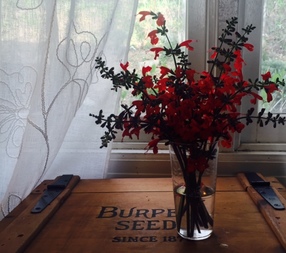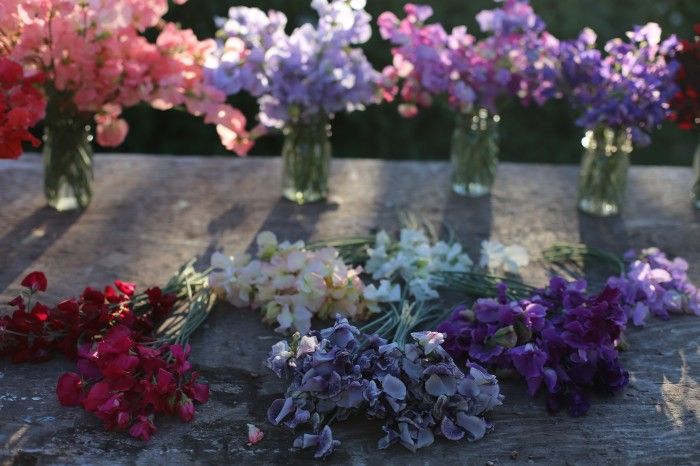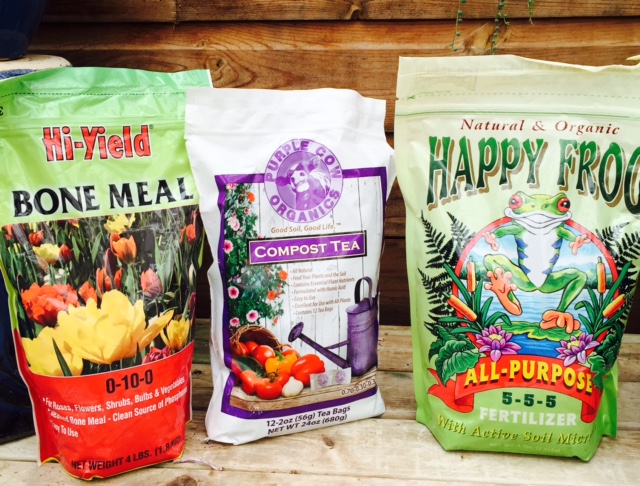|
4/27/2016 0 Comments The Cutflower Garden - Annuals'I must have flowers, always and always' - Claude Monet Ok, confession time. If I could have, I would have been a flower farmer. Something about growing flowers, cutting flowers, and breathing flowers 24/7 compels and calls. Maybe it's in my blood - Tracy means 'harvester' and my maiden name, Bauer, means 'farmer'. Why not farm flowers? I know it's hard work, but the payoff? Imagine armfuls of beautiful blossoms arranged into gorgeous, breathtaking bouquets . . . Who knows, I'm only 47 - it could still happen. Until then, I'll be content to grow a few flowers for cutting in my small garden. Following are annuals that make wonderful cut flowers: GROW FROM SEED: Many cutting annuals are easy to grow from seed, like those pictured above. From top left: 'Sundancer' Sunflower is early blooming, multi-branching and vigorous at 4 ft; 'Singing the Blues' Bouquet Larkspur are tall and graceful in the garden and in the vase; 'Fragrant Ten Week Stock' is the best branching variety with double flowers and a spicy-sweet fragrance; Bottom left: Zinnias - an endless selection available and every garden should have some - so easy to grow; 'Moulin Rouge' Sunflowers grow taller (6') but those rich velvety red flowers are pollenless and a must have for late summer & fall bouquets; 'Peach Passion' Sunflower is another pollen free, multi-branching sunflower standing 3-4'tall in the garden. And fortunately, we have all of them available in seed packets here at BGC.  IN THE GREENHOUSE: Sometimes it's easier to let others start the growing process. I have my eye on the following cutting annuals growing in the greenhouses here at BGC: Salvias 'Faye Chapel' and 'Black and Bloom' are especially nice; snapdragons, Dahlias, Gaura, and Agastache are a few more among many. OTHER MUST-HAVES: Dahlias of all kinds, sweet peas, Ranunculus, and Lisianthus. Bulbs planted in the fall make lovely spring bouquets. Daffodils, tulips, hyacinths and grape hyacinths top the list. A few great resources . . .
Happy planning and happy planting!
Tracy Hankwitz Horticulturist & Store Manager at Burlington Garden Center and flower farmer wannabe Watch for Part 2: The Cut Flower Garden - Perennials & Shrubs
0 Comments
4/8/2016 0 Comments Planting Sweet PeasImagine armloads of sweet peas in a palette of watercolors and the intoxicating fragrance filling the room. Mmmmmm, I'm totally wanting to be there in that sweet world. So much so that I was out last night in the dark, prepping the bed and tucking seeds into the earth. * Here's how to grow your own sweet peas: Seeds can be started indoors but they are easy to sow directly in the garden. They have a hard seed coat, so a soak in water for 8-10 hours before planting will speed up germination. Or nick the seed coat with a nail clippers. * While they are soaking, head outside to prepare the site. Choose a sunny spot (a little afternoon shade wouldn't hurt). Sweet peas are heavy feeders so it's important to amend the planting area. Work in compost or well-rotted manure (I used Purple Cow Compost), and a slow-release, natural fertilizer ( Happy Frog's All purpose is a good one). I also add a light dusting of bonemeal to provide an extra boost of phosphorus. Turn all the amendments under and mix well into the soil. Plan to fertilize the hungry sweet peas weekly, or at least twice a month with fish emulsion or compost tea. Sweet peas are climbers and will need a sturdy trellis to climb. Use garden netting or chicken wire between posts. Or try this fun, natural method: Plant seeds/seedlings in two rows, one on each side of the trellis, 6-8" apart, 1 " deep. Then watch them grow! * Remember, the more you pick, the more you get! Prolong blooming by deadheading. Better yet, pick these sweet-smelling beauties to enjoy in a vase. TIP: for the longest vase-life, pick when there are at least two unopened flowers at the tip of the stem. - Happy planting! Tracy Hankwitz, Horticulturist & BGC Store Manager |
|
|
STORE INFO
5205 Mormon Road Burlington, WI 53105 262.763.2153 |









